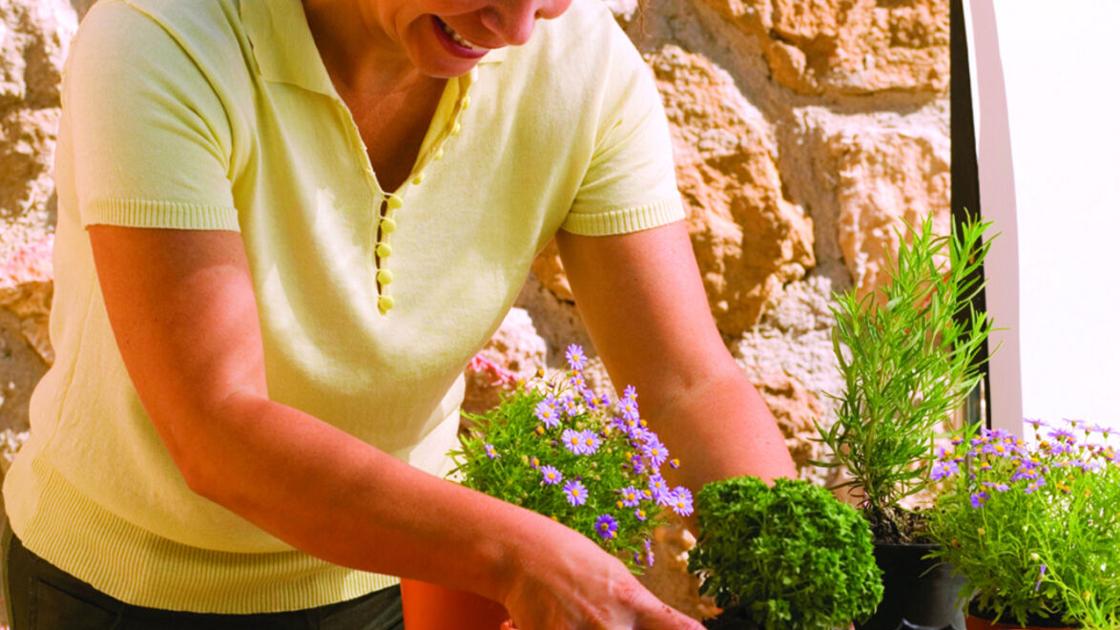
Looking for a winter gardening project?
How about growing your own indoor herb garden?
While not all herbs are going to do well inside, it can be fun to experiment and see what grows best for you. You can start with plants or seeds.
If you are looking for seeds, check out the free seed library housed at the Richmond Memorial Library in Batavia. The seed library is coordinated and maintained by Genesee County Master Gardener volunteers.
You can find the seed library in the non-fiction gardening section.
The library has been recently stocked with lots of herb seeds: anise, sweet basil, lemon basil, caraway, catnip, chamomile, chervil, cilantro, dill, fennel, garlic chive, lavender, oregano, parsley, rosemary, sage, spearmint, sweet marjoram, summer savory, and thyme.
The biggest challenge to growing herbs inside during WNY winters is getting enough light.
Herbs need six to eight hours of direct sunlight a day. Most of the herbs that we really like come from sunny and warm Mediterranean countries. Light is required for herbs to produce the oils that give them their flavor. Even a south window may not be enough during our winter months.
Parsley, thyme and mint will do well in a western exposure.
Supplemental lighting can improve your herb crop and you will definitely need it if you are starting plants from seed.
Plants will become “leggy” without enough light. Pinching herbs or harvesting to cook with, will help keep them more compact.
Periodically rotate your plants as they will naturally grow toward the window.
When using supplemental lighting, herb plants should be 5 to 15 inches from the light source. Lights should be on for 12 hours a day.
If you are growing herbs from seed you can place seedlings under two 40-watt white fluorescent bulbs for 14 to 16 hours. An easy way to get a broad light spectrum is to use a combination of warm and cool bulbs.
There is a variety of small growing kits available on the market. Many are perfect for a windowsill or kitchen counter, so your herbs are handy for your favorite recipe.
They come with a light source, room for pots and some are even self-watering.
There are also hydroponic kits available that don’t use potting soil. I even found one that was aquaponics — with room for six plants growing in a frame which fit over an aquarium.
A betta fish was living below and providing the fertilizer. That may not be for everyone.
Even though most herbs are drought tolerant and prefer drier soils when grown outside, you do have to pay attention to your indoor plants.
An excellent medium for growing herbs indoors consists of two parts potting soil with one-part perlite or sharp sand added for drainage. Most herbs prefer a soil pH between 6 and 7.
Waterlogged soil can spell death for herbs, especially in winter. Root rots can result from overwatering, but you don’t want your plants to dry out either.
A dried-out rosemary is a goner, while mint, chives and lemon balm want to be kept evenly moist. With most herbs you can let the soil surface dry between waterings, but not to the point where the plant wilts.
Pick containers with a drainage hole so excess water can drain out. Have some kind of container under the pot to catch that water.
Empty any excess water that collects in the saucer, so plants aren’t standing in it.
Consider using clay pots to house your herb plants. Clay pots are more porous than plastic pots and allow for better soil drainage.
Herbs grown indoors will need some fertilizer, but not a lot.
If you over-fertilize, you’ll get more leaves, but it will probably affect the aroma and taste. Give your herbs a low dose of water-soluble fertilizer every two weeks.
Indoor herbs prefer daytime temperatures around 65 to 70 degrees Fahrenheit and nighttime temperatures of 55 to 60 degrees. If you are growing your herbs on the windowsill, keep the foliage from touching the glass when it is cold outside.
You may even have to move them if winter temperatures get extremely cold. Most herbs can survive temperatures in the mid to low forties, but some cannot.
Take basil for example, it won’t survive temperatures below 50 degrees.
Winter heating results in dry air in our houses. Herbs would like some humidity in the air.
Grouping plants together can help raise the humidity around them. Just keep an eye out for insects that may roam plant to plant.
A humidifier in the room can benefit plants and people.
For the best flavor, herbs should be harvested before they bloom.
Make your cuts right above the node, where a pair of leaves are. This will encourage new growth.
Don’t harvest more than one-third of the plant at one time. When using fresh herbs instead of dried, the general guideline is to use three times the amount stated.
Your indoor herbs aren’t going to get as large as they would outside in the summer, but having plants to tend through the winter can help keep your spirits up until you can get back out in the garden. And having fresh herbs to cook with or make tea is an added bonus.
Have a gardening question? The Master Gardener office is open.
Please wear a mask when visiting the CCE office and check in at the reception window.
Master Gardener volunteers are normally in the office from 10 a.m. to noon weekdays. You can stop in at the CCE office at 420 East Main St. in Batavia, call (585) 343-3040, ext. 127, or e-mail them at: geneseemg@hotmail.com.
December 08, 2020 at 12:15PM
https://ift.tt/3lZgQwW
Master Gardener: Growing herbs indoors this winter | Lifestyles - The Daily News Online
https://ift.tt/3eCf9lu
Herb
No comments:
Post a Comment